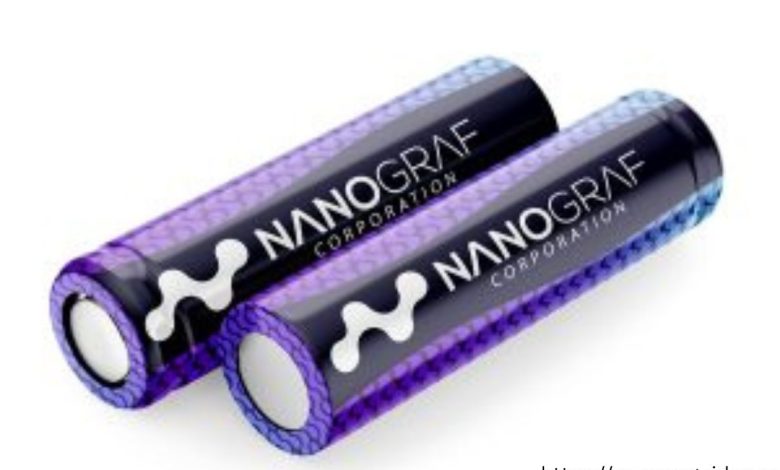Charged EVs | How NanoGraf is commercializing
Charged EVs | How NanoGraf is commercializing

Charged EVs | How NanoGraf is commercializing
- Silicon can potentially store 10 times as much energy as graphite, but it’s less stable, so it isn’t (currently) feasible to build an entire anode out of silicon Charged EVs | How NanoGraf is commercializing.
- Silicon is an abundant resource, so it has been less affected by supply chain bottlenecks than other critical raw materials such as nickel, cobalt and aluminum.
It’s a fundamentally less stable material, which is why you aren’t able to build the whole anode out of silicon. It’ll fracture and swell over time with too much in the anode.
Connor Hund:(Charged EVs | How NanoGraf is commercializing)
More about using less graphite. What we’re able to do with our next-generation silicon anode material is to increase that percentage up to 20, 25, 30% currently, with higher expectations in the future.
It’ll fracture and swell over time with too much in the anode, but that’s fundamentally the benefit—you get more capacity in the battery if you’re able to use more silicon in a stable way.
What we’re doing is injecting lithium into that core initially. We’ve sort of pre-swelled the material already, before we’re putting it into a battery.
What’s the percentage of the volume expansion?
Connor Hund: Swelling can be about 10 to 15% with graphite. It’ll still expand more than traditional graphite, but we’re able to do it in a stable way that fundamentally comes from the way that we’re prelithiating the silicon oxide core. That sort of enables that reaction to happen earlier in the manufacturing process, and that enables a fundamentally more stable material.
We’ve sort of pre-swelled the material already, before we’re putting it into a battery.
You’d have to get the full explanation at the PhD level, but that’s essentially what’s happening.
Connor Hund: Yes, there are two main types of silicon—silicon oxide and silicon carbide. A
The beauty of our material is that it drops into existing manufacturing processes, so we’re able to increase the percentage of silicon in the anode, increase the energy density.
we’re able to use a manufacturing approach that’s proven to be scalable in other industries, and what that allows us to do is lower our scale-up risk and our manufacturing risk.
That’s the first part of it. But we also have a completed battery cell that we’re able to sell on the market—a cylindrical 18650. We’re able to work with cell manufacturing partners to use our material to enable the world’s most energy-dense cylindrical 18650 [ at 810 Wh/L and 4.0 Ah capacity].
I don’t want to go into specific customer names, but you could think about customers who have a desire for long-lasting battery cells for portable products.
That’s the roadmap, but it’s probably on more than a three-year time scale to be sold commercially into those EV markets.
Where does the silicon come from? (Charged EVs | How NanoGraf is commercializing)
Connor Hund: Silicon, fortunately, is a very abundant resource, so that’s been impacted less than a lot of other input materials. Some thing like 70-80% of the world’s graphite comes from China , and that’s a huge consideration.
Connor Hund: It’s mostly from Asia today as well almost exclusively in Asia today. So that’s probably the part that’s even more important to onshore—the refining of those materials.
and he cited the expansion issue as an obstacle with silicon. (Charged EVs | How NanoGraf is commercializing)
We’ve certainly proven out, and are proving out in a commercial cell that we’re going to be selling on the market, that there will need to be graphite certainly for the foreseeable future in the anode, but it doesn’t need to ask for 90-plus percent graphite. We think we’ve already proven out the ability to use up to 30 percent silicon in the anode, and we have development work going on to push that number even further.
lithium-ion liquid-electrolyte batteries Charged EVs | How Nano Graf is commercializing.
For more information about graphite, and why it’s a critical component of EV battery anodes, see our Q&A with Graphex CEO John DeMaio.
Charged EVs | How NanoGraf is commercializing
I don’t want to go into specific customer names, but you could think about customers who have a desire for long-lasting battery cells for portable products.
Charged EVs | How NanoGraf is commercializing
That’s the roadmap, but it’s probably on more than a three-year time scale to be sold commercially into those EV markets.
Something like 70-80% of the world’s graphite comes from China , and that’s a huge consideration.
almost exclusively in Asia today. So that’s probably the part that’s even more important to onshore—the refining of those materials.
he cited the expansion issue as an obstacle with silicon.
Charged EVs | How NanoGraf is commercializing




